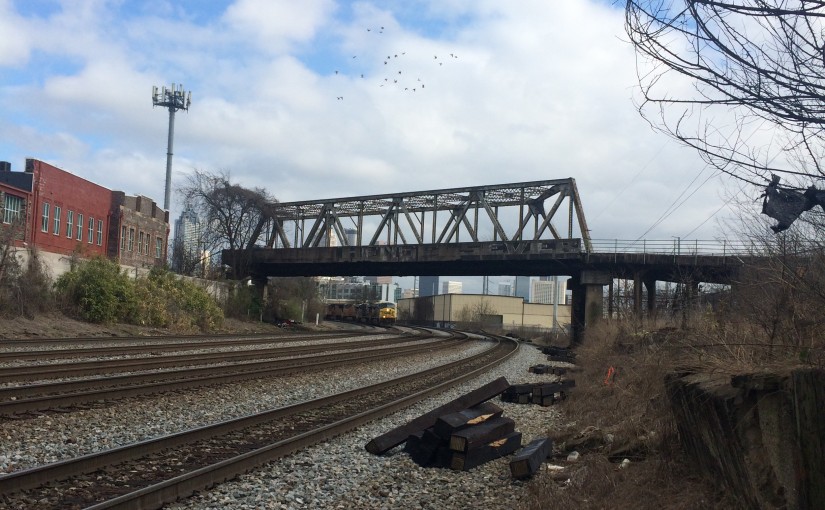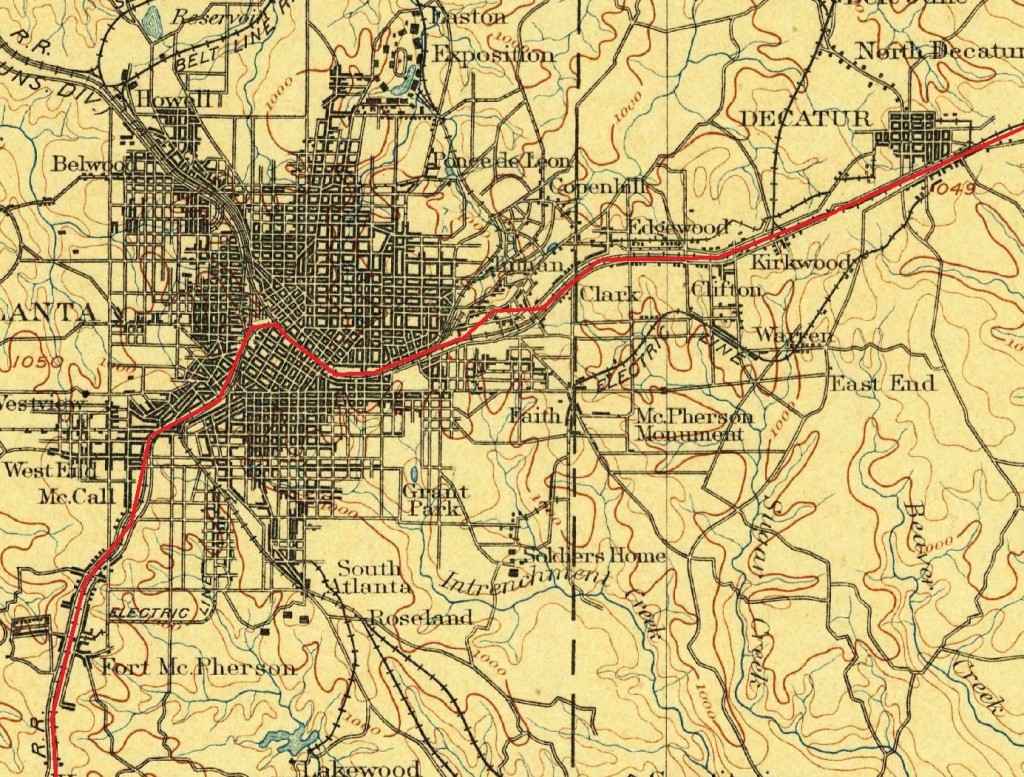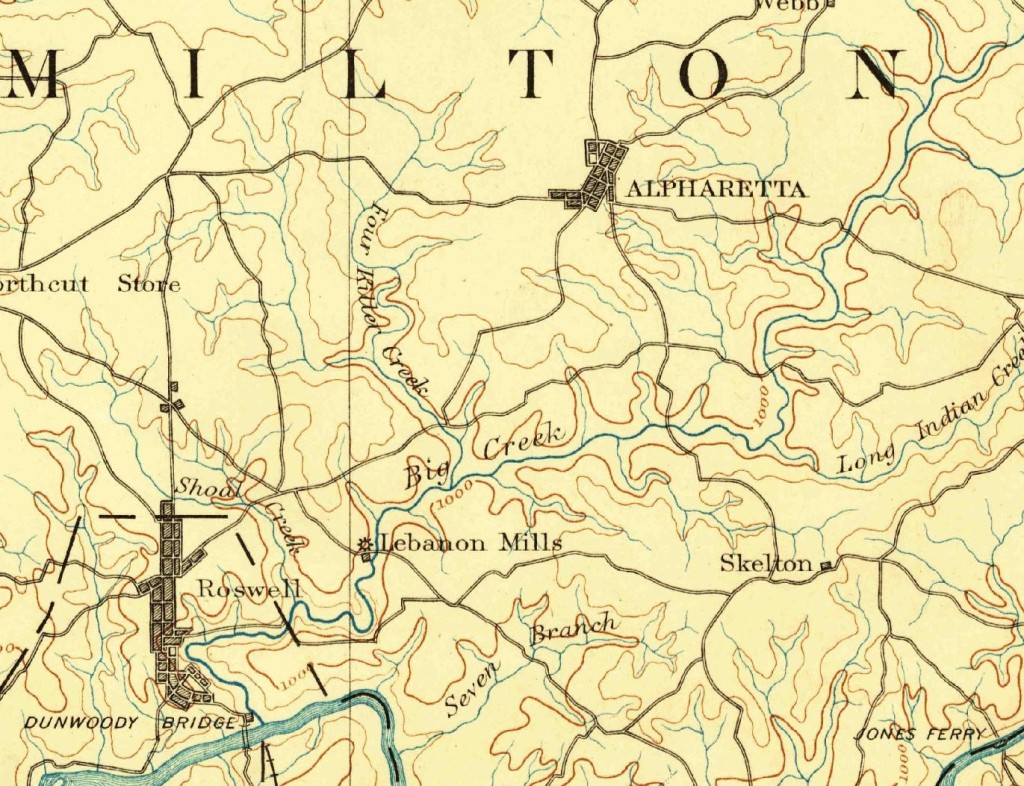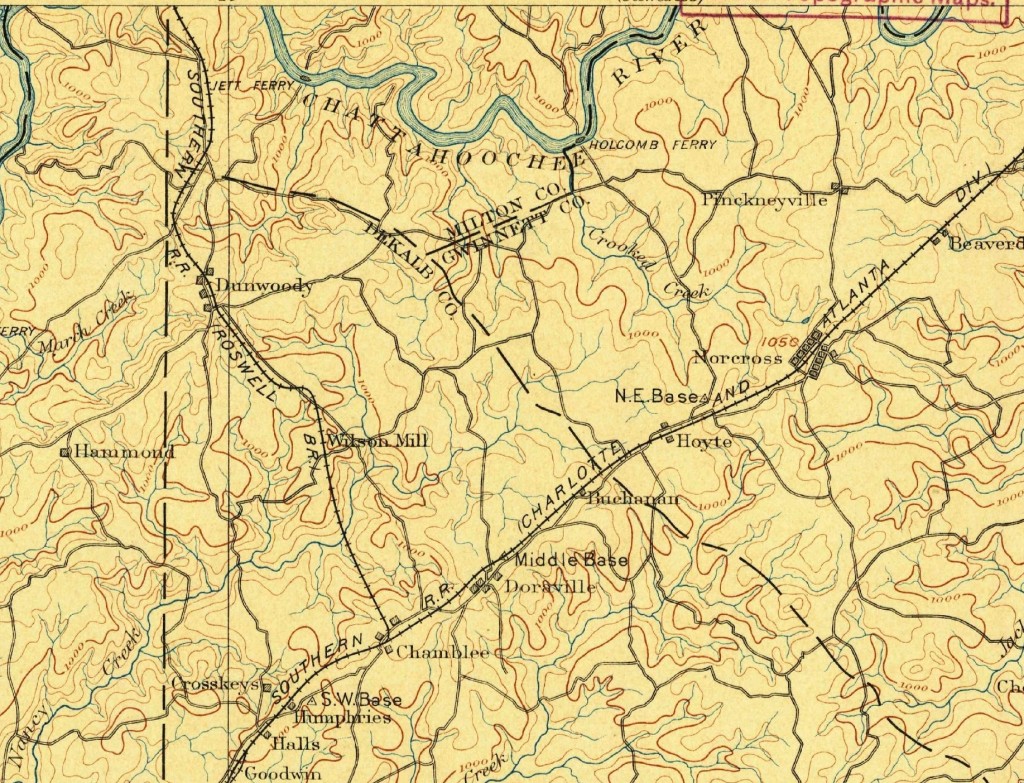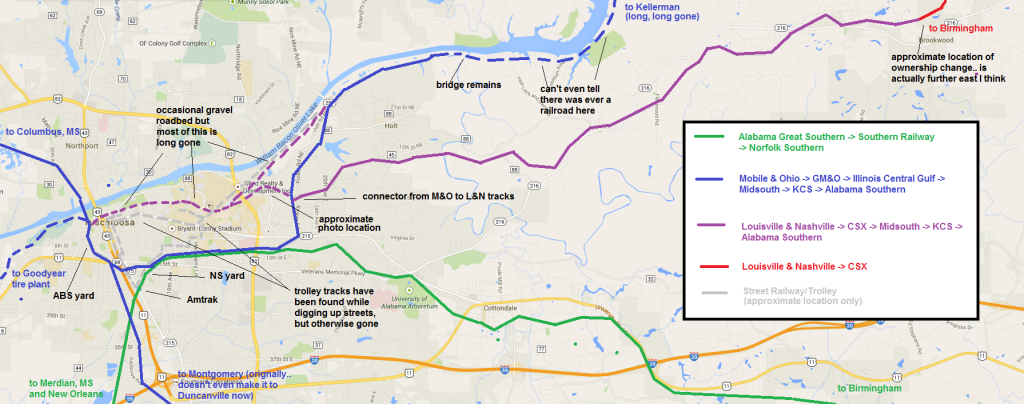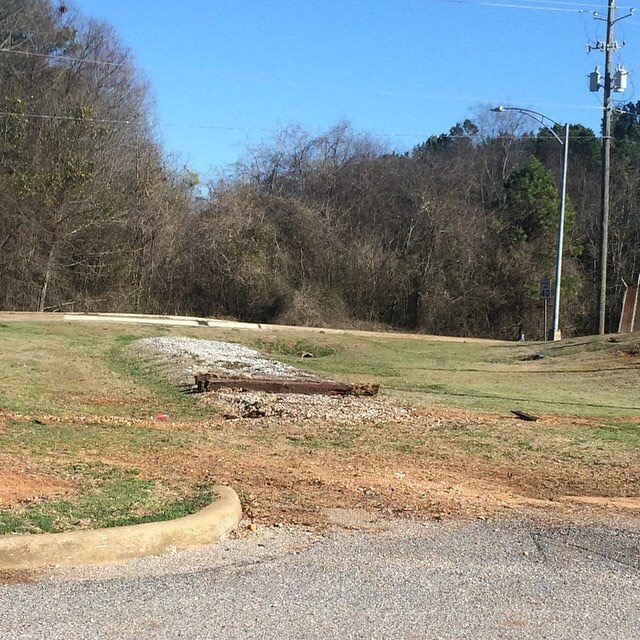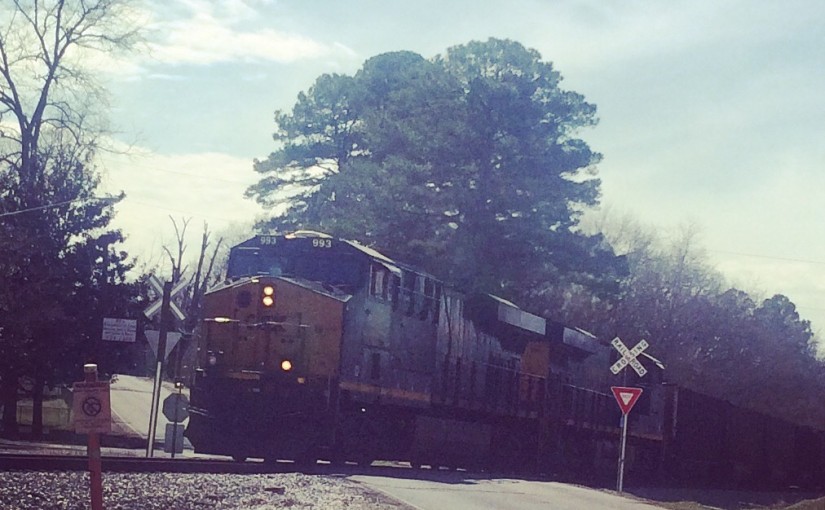The Bankhead avenue bridge once carried US 78 over the railroad tracks. Now it stops abruptly in mid air.
Both NS and CSX pass under here. This set of tracks running parallel to Marietta street between about the King Plow center and the Georgia World Congress Center is a major funnel of train activity, and certainly was already in 1912 when this bridge was built. You can see why they would want to put a bridge over it.
Here are some photos taken on the approach to and on the bridge itself. These were taken a few weeks ago.
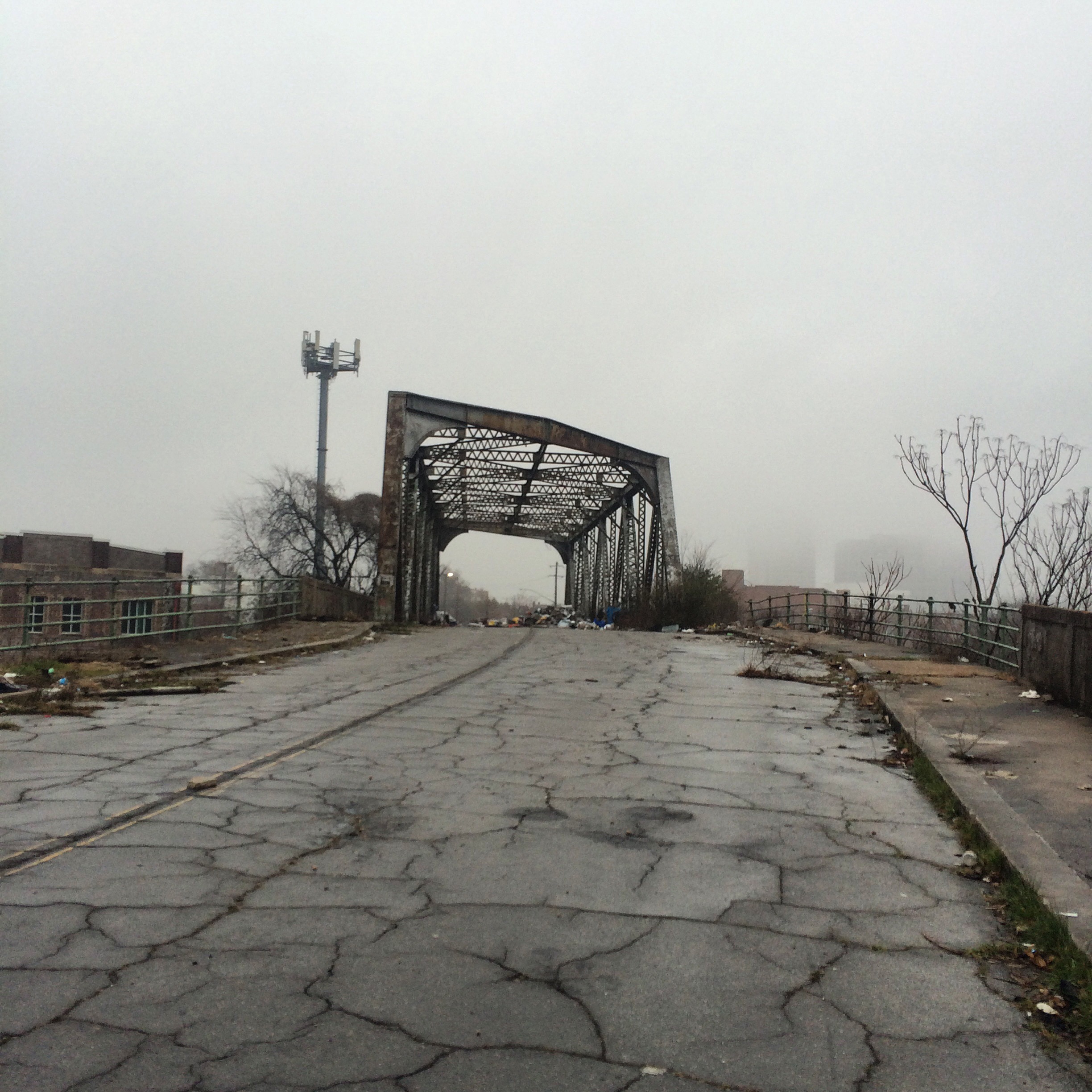

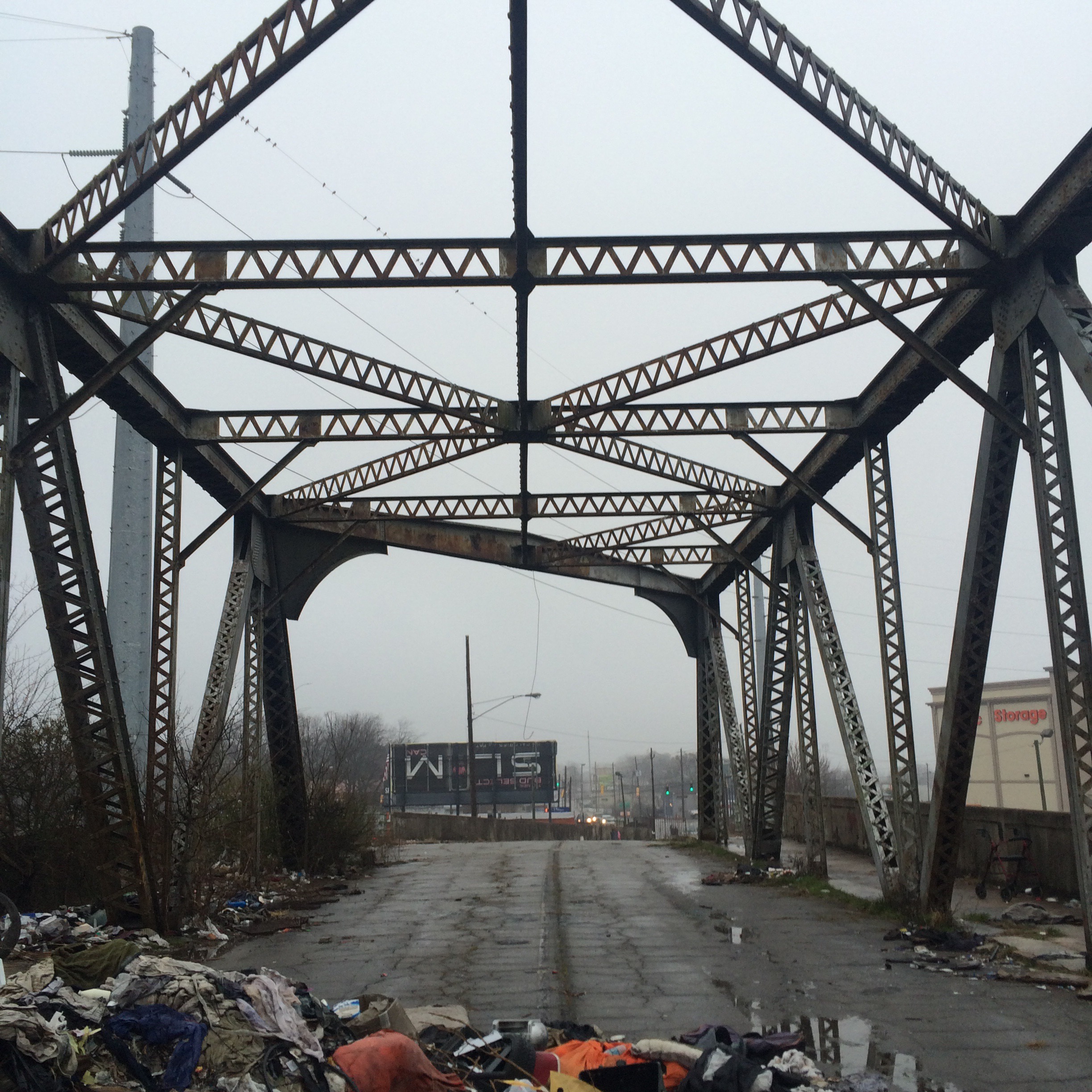
This is an older photo of the end of the bridge, clearly taken at a different time of year. As you can see, it just kind of.. stops. There is nothing to prevent you from just walking off the end of it.
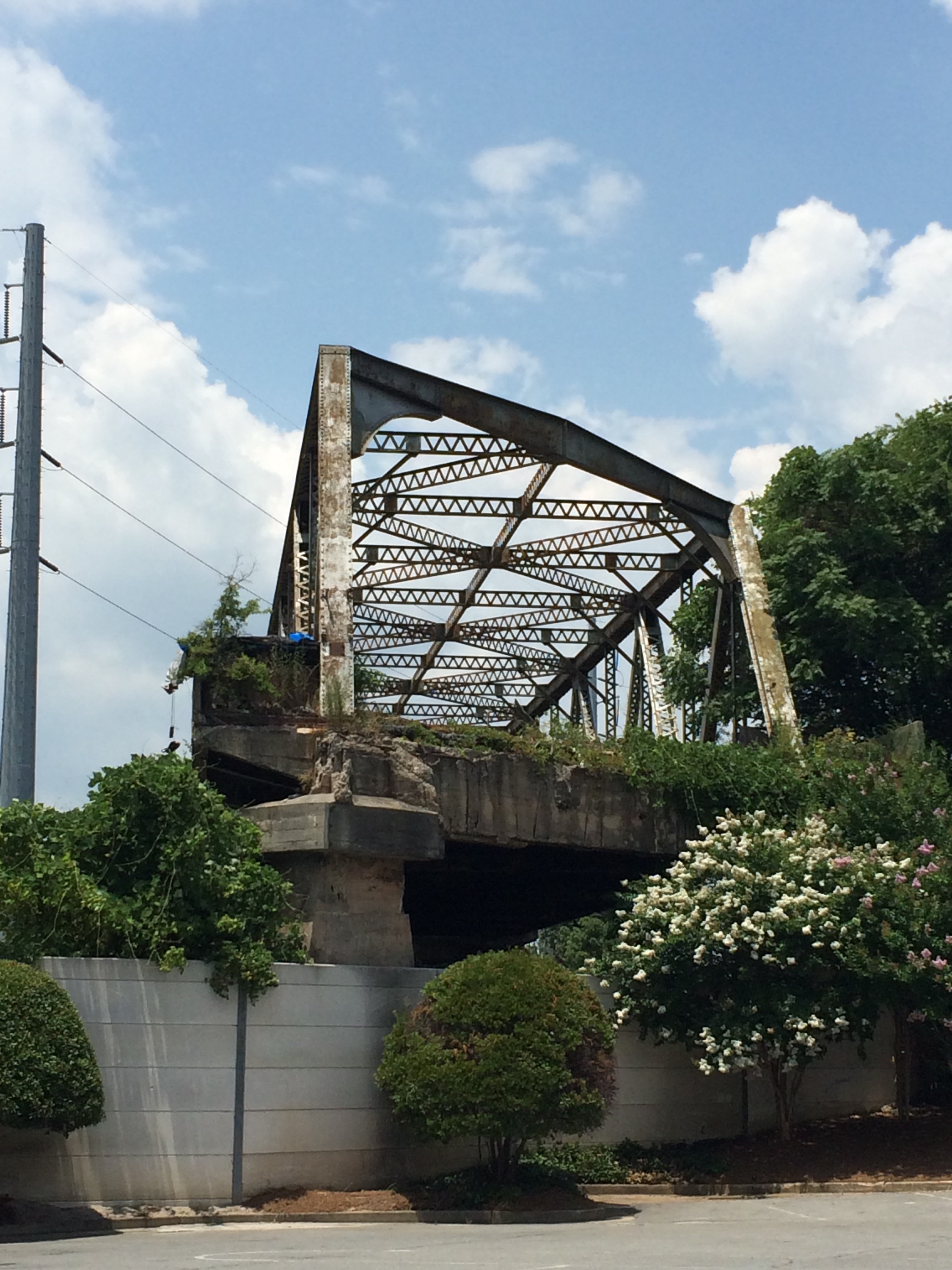
I’m surprised you never see news stories about homeless people falling off of it.
The bridge and tracks under it can easily be observed from the Northside Drive bridge slightly to the north. This is not a bad place to stand waiting for trains, if you can find a place to park. I actually went to the bakery cafe at the corner of Northside and Marietta and bought something so I wouldn’t feel guilty about parking there.

I also went down under the thing to trackside level, to get pictures of trains going under it.
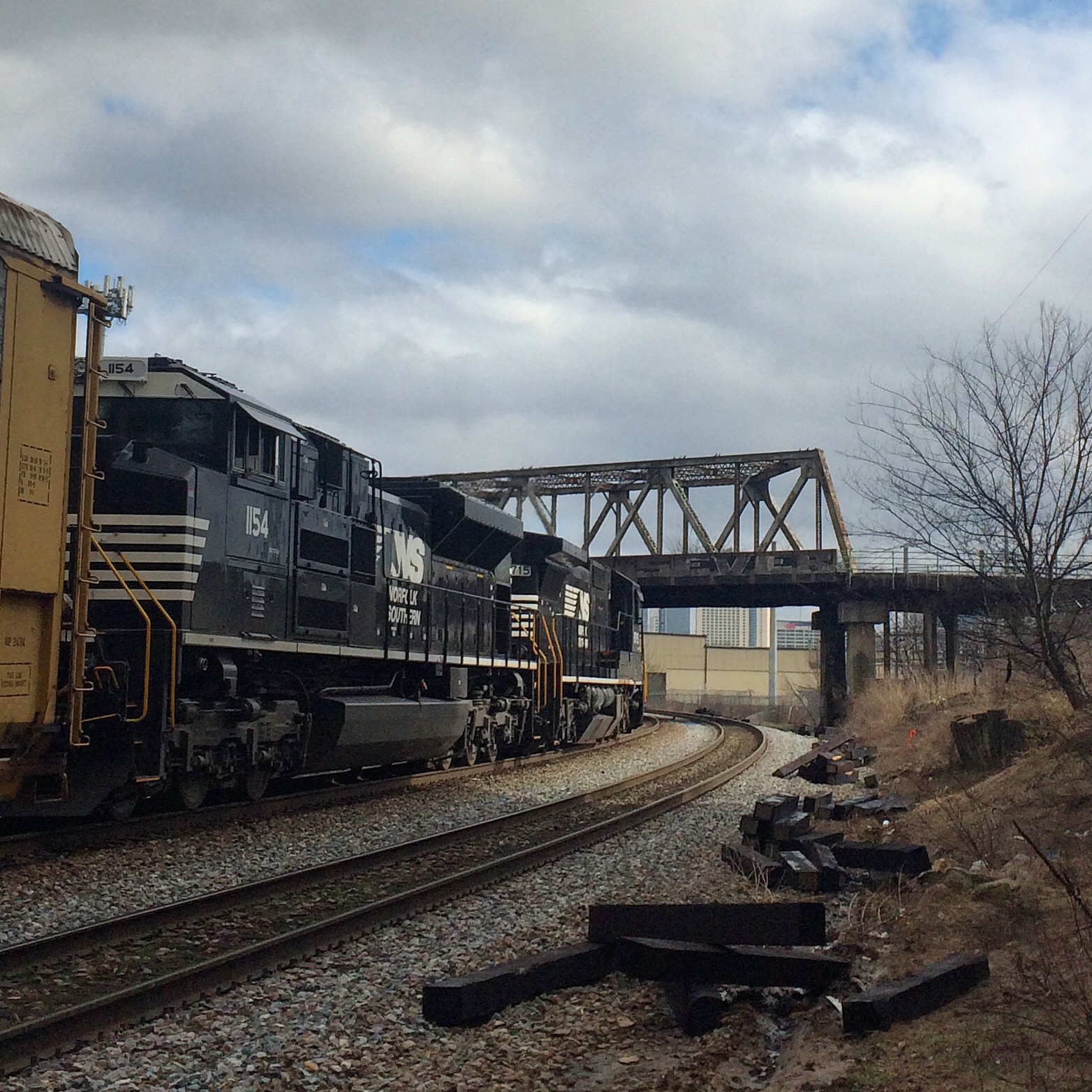

Just to give an idea of train frequency here. The three trains shown were 10 and 5 minutes apart. It had been about 30 minutes since the previous train which was leaving just as I arrived. I would expect this pattern to hold at most times of day.
